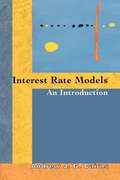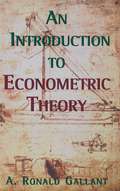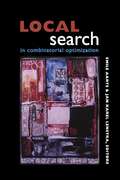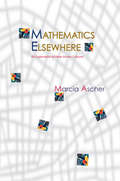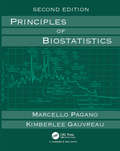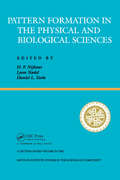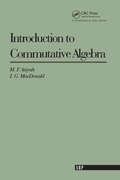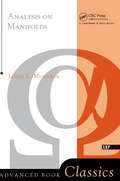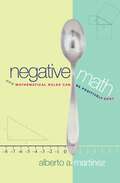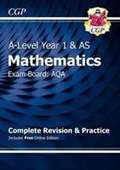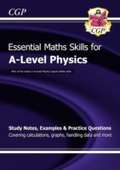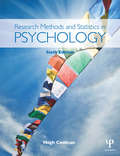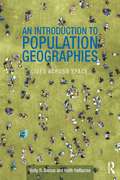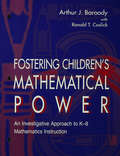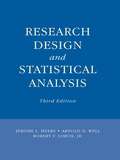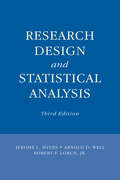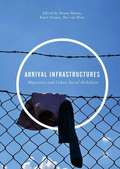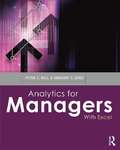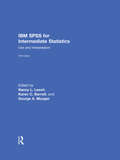- Table View
- List View
Fixing Frege (Princeton Monographs in Philosophy (PDF))
by John P. BurgessThe great logician Gottlob Frege attempted to provide a purely logical foundation for mathematics. His system collapsed when Bertrand Russell discovered a contradiction in it. Thereafter, mathematicians and logicians, beginning with Russell himself, turned in other directions to look for a framework for modern abstract mathematics. Over the past couple of decades, however, logicians and philosophers have discovered that much more is salvageable from the rubble of Frege's system than had previously been assumed. A variety of repaired systems have been proposed, each a consistent theory permitting the development of a significant portion of mathematics. This book surveys the assortment of methods put forth for fixing Frege's system, in an attempt to determine just how much of mathematics can be reconstructed in each. John Burgess considers every proposed fix, each with its distinctive philosophical advantages and drawbacks. These systems range from those barely able to reconstruct the rudiments of arithmetic to those that go well beyond the generally accepted axioms of set theory into the speculative realm of large cardinals. For the most part, Burgess finds that attempts to fix Frege do less than advertised to revive his system. This book will be the benchmark against which future analyses of the revival of Frege will be measured.
Inherited Wealth (PDF)
by Jens Beckert Thomas DunlapHow to regulate the transfer of wealth from one generation to the next has been hotly debated among politicians, legal scholars, sociologists, economists, and philosophers for centuries. Bequeathing wealth is a vital ingredient of family solidarity. But does the reproduction of social inequality through inheritance square with the principle of equal opportunity? Does democracy suffer when family wealth becomes political power? The first in-depth, comparative study of the development of inheritance law in the United States, France, and Germany, Inherited Wealth investigates longstanding political and intellectual debates over inheritance laws and explains why these laws still differ so greatly among these countries. Using a sociological perspective, Jens Beckert sheds light on the four most controversial issues in inheritance law during the past two centuries: the freedom to dispose of one's property as one wishes, the rights of family members to the wealth bequeathed, the dissolution of entails (which restrict inheritance to specific classes of heirs), and estate taxation. Beckert shows that while the United States, France, and Germany have all long defended inheritance rights based on the notion of individual property rights, they have justified limitations on inheritance rights in profoundly different ways, reflecting culturally specific ways of understanding the problems of inherited wealth.
Interest Rate Models: An Introduction (PDF)
by Andrew J. CairnsThe field of financial mathematics has developed tremendously over the past thirty years, and the underlying models that have taken shape in interest rate markets and bond markets, being much richer in structure than equity-derivative models, are particularly fascinating and complex. This book introduces the tools required for the arbitrage-free modelling of the dynamics of these markets. Andrew Cairns addresses not only seminal works but also modern developments. Refreshingly broad in scope, covering numerical methods, credit risk, and descriptive models, and with an approachable sequence of opening chapters, Interest Rate Models will make readers--be they graduate students, academics, or practitioners--confident enough to develop their own interest rate models or to price nonstandard derivatives using existing models. The mathematical chapters begin with the simple binomial model that introduces many core ideas. But the main chapters work their way systematically through all of the main developments in continuous-time interest rate modelling. The book describes fully the broad range of approaches to interest rate modelling: short-rate models, no-arbitrage models, the Heath-Jarrow-Morton framework, multifactor models, forward measures, positive-interest models, and market models. Later chapters cover some related topics, including numerical methods, credit risk, and model calibration. Significantly, the book develops the martingale approach to bond pricing in detail, concentrating on risk-neutral pricing, before later exploring recent advances in interest rate modelling where different pricing measures are important.
An Introduction to Econometric Theory: Measure-Theoretic Probability and Statistics with Applications to Economics (PDF)
by A. Ronald GallantIntended primarily to prepare first-year graduate students for their ongoing work in econometrics, economic theory, and finance, this innovative book presents the fundamental concepts of theoretical econometrics, from measure-theoretic probability to statistics. A. Ronald Gallant covers these topics at an introductory level and develops the ideas to the point where they can be applied. He thereby provides the reader not only with a basic grasp of the key empirical tools but with sound intuition as well. In addition to covering the basic tools of empirical work in economics and finance, Gallant devotes particular attention to motivating ideas and presenting them as the solution to practical problems. For example, he presents correlation, regression, and conditional expectation as a means of obtaining the best approximation of one random variable by some function of another. He considers linear, polynomial, and unrestricted functions, and leads the reader to the notion of conditioning on a sigma-algebra as a means for finding the unrestricted solution. The reader thus gains an understanding of the relationships among linear, polynomial, and unrestricted solutions. Proofs of results are presented when the proof itself aids understanding or when the proof technique has practical value. A major text-treatise by one of the leading scholars in this field, An Introduction to Econometric Theory will prove valuable not only to graduate students but also to all economists, statisticians, and finance professionals interested in the ideas and implications of theoretical econometrics.
Local Search in Combinatorial Optimization (PDF)
by Emile Aarts Jan Karel LenstraIn the past three decades, local search has grown from a simple heuristic idea into a mature field of research in combinatorial optimization that is attracting ever-increasing attention. Local search is still the method of choice for NP-hard problems as it provides a robust approach for obtaining high-quality solutions to problems of a realistic size in reasonable time. Local Search in Combinatorial Optimization covers local search and its variants from both a theoretical and practical point of view, each topic discussed by a leading authority. This book is an important reference and invaluable source of inspiration for students and researchers in discrete mathematics, computer science, operations research, industrial engineering, and management science. In addition to the editors, the contributors are Mihalis Yannakakis, Craig A. Tovey, Jan H. M. Korst, Peter J. M. van Laarhoven, Alain Hertz, Eric Taillard, Dominique de Werra, Heinz Mühlenbein, Carsten Peterson, Bo Söderberg, David S. Johnson, Lyle A. McGeoch, Michel Gendreau, Gilbert Laporte, Jean-Yves Potvin, Gerard A. P. Kindervater, Martin W. P. Savelsbergh, Edward J. Anderson, Celia A. Glass, Chris N. Potts, C. L. Liu, Peichen Pan, Iiro Honkala, and Patric R. J. Östergård.
Mathematics Elsewhere: An Exploration of Ideas Across Cultures (PDF)
by Marcia AscherMathematics Elsewhere is a fascinating and important contribution to a global view of mathematics. Presenting mathematical ideas of peoples from a variety of small-scale and traditional cultures, it humanizes our view of mathematics and expands our conception of what is mathematical. Through engaging examples of how particular societies structure time, reach decisions about the future, make models and maps, systematize relationships, and create intriguing figures, Marcia Ascher demonstrates that traditional cultures have mathematical ideas that are far more substantial and sophisticated than is generally acknowledged. Malagasy divination rituals, for example, rely on complex algebraic algorithms. And some cultures use calendars far more abstract and elegant than our own. Ascher also shows that certain concepts assumed to be universal--that time is a single progression, for instance, or that equality is a static relationship--are not. The Basque notion of equivalence, for example, is a dynamic and temporal one not adequately captured by the familiar equal sign. Other ideas taken to be the exclusive province of professionally trained Western mathematicians are, in fact, shared by people in many societies. The ideas discussed come from geographically varied cultures, including the Borana and Malagasy of Africa, the Tongans and Marshall Islanders of Oceania, the Tamil of South India, the Basques of Western Europe, and the Balinese and Kodi of Indonesia. This book belongs on the shelves of mathematicians, math students, and math educators, and in the hands of anyone interested in traditional societies or how people think. Illustrating how mathematical ideas play a vital role in diverse human endeavors from navigation to social interaction to religion, it offers--through the vehicle of mathematics--unique cultural encounters to any reader.
Principles of Biostatistics
by Marcello Pagano Kimberlee GauvreauThis edition is a reprint of the second edition published in 2000 by Brooks/Cole and then Cengage Learning. Principles of Biostatistics is aimed at students in the biological and health sciences who wish to learn modern research methods. It is based on a required course offered at the Harvard School of Public Health. In addition to these graduate students, many health professionals from the Harvard medical area attend as well. The book is divided into three parts. The first five chapters deal with collections of numbers and ways in which to summarize, explore, and explain them. The next two chapters focus on probability and introduce the tools needed for the subsequent investigation of uncertainty. It is only in the eighth chapter and thereafter that the authors distinguish between populations and samples and begin to investigate the inherent variability introduced by sampling, thus progressing to inference. Postponing the slightly more difficult concepts until a solid foundation has been established makes it easier for the reader to comprehend them. The supplements include a manual for students with solutions for odd-numbered exercises, a manual for instructors with solutions to all exercises, and selected data sets. Marcello Pagano is Professor of Statistical Computing in the Department of Biostatistics at the Harvard School of Public Health. His research in biostatistics is on computer intensive inference and surveillance methods that involve screening methodologies, with their associated laboratory tests, and in obtaining more accurate testing results that use existing technologies. Kimberlee Gauvreau is Associate Professor in the Department of Biostatistics and Associate Professor of Pediatrics at Harvard Medical School. Dr. Gauvreau’s research focuses on biostatistical issues arising in the field of pediatric cardiology. She also works on the development and validation of methods of adjustment for case mix complexity.
Pattern Formation In The Physical And Biological Sciences
by H. Frederick NijhoutThis Lecture Notes Volume represents the first time any of the summer school lectures have been collected and published on a discrete subject rather than grouping all of a season's lectures together. This volume provides a broad survey of current thought on the problem of pattern formation. Spanning six years of summer school lectures, it includes articles which examine the origin and evolution of spatial patterns in physio-chemical and biological systems from a great diversity of theoretical and mechanistic perspectives. In addition, most of these pieces have been updated by their authors and three articles never previously published have been added.
Introduction To Commutative Algebra
by Michael AtiyahFirst Published in 2018. Routledge is an imprint of Taylor & Francis, an Informa company.
Analysis On Manifolds
by James R. MunkresA readable introduction to the subject of calculus on arbitrary surfaces or manifolds. Accessible to readers with knowledge of basic calculus and linear algebra. Sections include series of problems to reinforce concepts.
Negative Math: How Mathematical Rules Can Be Positively Bent (PDF)
by Alberto A. MartínezA student in class asks the math teacher: "Shouldn't minus times minus make minus?" Teachers soon convince most students that it does not. Yet the innocent question brings with it a germ of mathematical creativity. What happens if we encourage that thought, odd and ungrounded though it may seem? Few books in the field of mathematics encourage such creative thinking. Fewer still are engagingly written and fun to read. This book succeeds on both counts. Alberto Martinez shows us how many of the mathematical concepts that we take for granted were once considered contrived, imaginary, absurd, or just plain wrong. Even today, he writes, not all parts of math correspond to things, relations, or operations that we can actually observe or carry out in everyday life. Negative Math ponders such issues by exploring controversies in the history of numbers, especially the so-called negative and "impossible" numbers. It uses history, puzzles, and lively debates to demonstrate how it is still possible to devise new artificial systems of mathematical rules. In fact, the book contends, departures from traditional rules can even be the basis for new applications. For example, by using an algebra in which minus times minus makes minus, mathematicians can describe curves or trajectories that are not represented by traditional coordinate geometry. Clear and accessible, Negative Math expects from its readers only a passing acquaintance with basic high school algebra. It will prove pleasurable reading not only for those who enjoy popular math, but also for historians, philosophers, and educators. Key Features? Uses history, puzzles, and lively debates to devise new mathematical systems Shows how departures from rules can underlie new practical applications Clear and accessible Requires a background only in basic high school algebra
New A-Level Maths for AQA: AQA (PDF)
by Cgp BooksNew A-Level Maths for AQA: Year 1 & AS Complete Revision & Practice with Online Edition
A-Level Physics: Essential Maths Skills (PDF)
by Cgp BooksThis brilliant CGP book covers all the maths skills needed in AS and A-Level Physics (the use of maths is required for up to 40% of the marks in the final exams and assessments). It explains Calculations, Geometry, Trigonometry, Graph Skills and Handling Date, with clear study notes and step-by-step examples in the context of Physics. And to make sure you’ve really got to grips with it all, there are practice questions for each topic - with answers included at the back of the book.
Research Methods and Statistics in Psychology
by Hugh CoolicanThis sixth edition of Research Methods and Statistics in Psychology has been fully revised and updated, providing students with the most readable and comprehensive survey of research methods, statistical concepts and procedures in psychology today. Assuming no prior knowledge, this bestselling text takes you through every stage of your research project giving advice on planning and conducting studies, analysing data and writing up reports. The book provides clear coverage of statistical procedures, and includes everything needed from nominal level tests to multi-factorial ANOVA designs, multiple regression and log linear analysis. It features detailed and illustrated SPSS instructions for all these procedures eliminating the need for an extra SPSS textbook. New features in the sixth edition include: "Tricky bits" - in-depth notes on the things that students typically have problems with, including common misunderstandings and likely mistakes. Improved coverage of qualitative methods and analysis, plus updates to Grounded Theory, Interpretive Phenomenological Analysis and Discourse Analysis. A full and recently published journal article using Thematic Analysis, illustrating how articles appear in print. Discussion of contemporary issues and debates, including recent coverage of journals’ reluctance to publish replication of studies. Fully updated online links, offering even more information and useful resources, especially for statistics. Each chapter contains a glossary, key terms and newly integrated exercises, ensuring that key concepts are understood. A companion website (www.routledge.com/cw/coolican) provides additional exercises, revision flash cards, links to further reading and data for use with SPSS.
An Introduction to Population Geographies: Lives Across Space
by Holly R. Barcus Keith HalfacreeAn Introduction to Population Geographies provides a foundation to the incredibly diverse, topical and interesting field of twenty-first-century population geography. It establishes the substantive concerns of the subdiscipline, acknowledges the sheer diversity of its approaches, key concepts and theories and engages with the resulting major areas of academic debate that stem from this richness. Written in an accessible style and assuming little prior knowledge of topics covered, yet drawing on a wide range of diverse academic literature, the book’s particular originality comes from its extended definition of population geography that locates it firmly within the multiple geographies of the life course. Consequently, issues such as childhood and adulthood, family dynamics, ageing, everyday mobilities, morbidity and differential ability assume a prominent place alongside the classic population geography triumvirate of births, migrations and deaths. This broader framing of the field allows the book to address more holistically aspects of lives across space often provided little attention in current textbooks. Particular note is given to how these lives are shaped though hybrid social, biological and individual arenas of differential life course experience. By engaging with traditional quantitative perspectives and newer qualitative insights, the authors engage students from the quantitative macro scale of population to the micro individual scale. Aimed at higher-level undergraduate and graduate students, this introductory text provides a well-developed pedagogy, including case studies that illustrate theory, concepts and issues.
Fostering Children's Mathematical Power: An Investigative Approach To K-8 Mathematics Instruction
by Arthur Baroody Ronald T. CoslickFirst published in 1998. Routledge is an imprint of Taylor & Francis, an informa company.
Fostering Children's Mathematical Power: An Investigative Approach To K-8 Mathematics Instruction
by Arthur Baroody Ronald T. CoslickFirst published in 1998. Routledge is an imprint of Taylor & Francis, an informa company.
Research Design and Statistical Analysis: Third Edition
by Jerome L. Myers Arnold D. Well Robert F. Lorch JrResearch Design and Statistical Analysis provides comprehensive coverage of the design principles and statistical concepts necessary to make sense of real data. The book’s goal is to provide a strong conceptual foundation to enable readers to generalize concepts to new research situations. Emphasis is placed on the underlying logic and assumptions of the analysis and what it tells the researcher, the limitations of the analysis, and the consequences of violating assumptions. Sampling, design efficiency, and statistical models are emphasized throughout. As per APA recommendations, emphasis is also placed on data exploration, effect size measures, confidence intervals, and using power analyses to determine sample size. "Real-world" data sets are used to illustrate data exploration, analysis, and interpretation. The book offers a rare blend of the underlying statistical assumptions, the consequences of their violations, and practical advice on dealing with them. Changes in the New Edition: Each section of the book concludes with a chapter that provides an integrated example of how to apply the concepts and procedures covered in the chapters of the section. In addition, the advantages and disadvantages of alternative designs are discussed. A new chapter (1) reviews the major steps in planning and executing a study, and the implications of those decisions for subsequent analyses and interpretations. A new chapter (13) compares experimental designs to reinforce the connection between design and analysis and to help readers achieve the most efficient research study. A new chapter (27) on common errors in data analysis and interpretation. Increased emphasis on power analyses to determine sample size using the G*Power 3 program. Many new data sets and problems. More examples of the use of SPSS (PASW) Version 17, although the analyses exemplified are readily carried out by any of the major statistical software packages. A companion website with the data used in the text and the exercises in SPSS and Excel formats; SPSS syntax files for performing analyses; extra material on logistic and multiple regression; technical notes that develop some of the formulas; and a solutions manual and the text figures and tables for instructors only. Part 1 reviews research planning, data exploration, and basic concepts in statistics including sampling, hypothesis testing, measures of effect size, estimators, and confidence intervals. Part 2 presents between-subject designs. The statistical models underlying the analysis of variance for these designs are emphasized, along with the role of expected mean squares in estimating effects of variables, the interpretation of nteractions, and procedures for testing contrasts and controlling error rates. Part 3 focuses on repeated-measures designs and considers the advantages and disadvantages of different mixed designs. Part 4 presents detailed coverage of correlation and bivariate and multiple regression with emphasis on interpretation and common errors, and discusses the usefulness and limitations of these procedures as tools for prediction and for developing theory. This is one of the few books with coverage sufficient for a 2-semester course sequence in experimental design and statistics as taught in psychology, education, and other behavioral, social, and health sciences. Incorporating the analyses of both experimental and observational data provides continuity of concepts and notation. Prerequisites include courses on basic research methods and statistics. The book is also an excellent resource for practicing researchers.
Research Design and Statistical Analysis: Third Edition (Inquiry And Pedagogy Across Diverse Contexts Ser.)
by Jerome L. Myers Arnold D. Well Robert F. Lorch JrResearch Design and Statistical Analysis provides comprehensive coverage of the design principles and statistical concepts necessary to make sense of real data. The book’s goal is to provide a strong conceptual foundation to enable readers to generalize concepts to new research situations. Emphasis is placed on the underlying logic and assumptions of the analysis and what it tells the researcher, the limitations of the analysis, and the consequences of violating assumptions. Sampling, design efficiency, and statistical models are emphasized throughout. As per APA recommendations, emphasis is also placed on data exploration, effect size measures, confidence intervals, and using power analyses to determine sample size. "Real-world" data sets are used to illustrate data exploration, analysis, and interpretation. The book offers a rare blend of the underlying statistical assumptions, the consequences of their violations, and practical advice on dealing with them. Changes in the New Edition: Each section of the book concludes with a chapter that provides an integrated example of how to apply the concepts and procedures covered in the chapters of the section. In addition, the advantages and disadvantages of alternative designs are discussed. A new chapter (1) reviews the major steps in planning and executing a study, and the implications of those decisions for subsequent analyses and interpretations. A new chapter (13) compares experimental designs to reinforce the connection between design and analysis and to help readers achieve the most efficient research study. A new chapter (27) on common errors in data analysis and interpretation. Increased emphasis on power analyses to determine sample size using the G*Power 3 program. Many new data sets and problems. More examples of the use of SPSS (PASW) Version 17, although the analyses exemplified are readily carried out by any of the major statistical software packages. A companion website with the data used in the text and the exercises in SPSS and Excel formats; SPSS syntax files for performing analyses; extra material on logistic and multiple regression; technical notes that develop some of the formulas; and a solutions manual and the text figures and tables for instructors only. Part 1 reviews research planning, data exploration, and basic concepts in statistics including sampling, hypothesis testing, measures of effect size, estimators, and confidence intervals. Part 2 presents between-subject designs. The statistical models underlying the analysis of variance for these designs are emphasized, along with the role of expected mean squares in estimating effects of variables, the interpretation of nteractions, and procedures for testing contrasts and controlling error rates. Part 3 focuses on repeated-measures designs and considers the advantages and disadvantages of different mixed designs. Part 4 presents detailed coverage of correlation and bivariate and multiple regression with emphasis on interpretation and common errors, and discusses the usefulness and limitations of these procedures as tools for prediction and for developing theory. This is one of the few books with coverage sufficient for a 2-semester course sequence in experimental design and statistics as taught in psychology, education, and other behavioral, social, and health sciences. Incorporating the analyses of both experimental and observational data provides continuity of concepts and notation. Prerequisites include courses on basic research methods and statistics. The book is also an excellent resource for practicing researchers.
Arrival Infrastructures: Urban Social Mobility And Migration
by Bruno Meeus Karel Arnaut Bas Van HeurThis volume introduces a strategic interdisciplinary research agenda on arrival infrastructures. Arrival infrastructures are those parts of the urban fabric within which newcomers become entangled on arrival, and where their future local or translocal social mobilities are produced as much as negotiated. Challenging the dominance of national normativities, temporalities, and geographies of “arrival,” the authors scrutinize the position and potential of cities as transnationally embedded places of arrival. Critically interrogating conceptions of migrant arrival as oriented towards settlement and integration, the volume directs attention to much more diverse migration trajectories that shape our cities today. Each chapter examines how migrants, street-level bureaucrats, local residents, and civil society actors build—with the resources they have at hand—the infrastructures that accommodate, channel, and govern arrival.
Arrival Infrastructures (PDF): Migration and Urban Social Mobilities
by Bruno Meeus Karel Arnaut Bas Van HeurThis volume introduces a strategic interdisciplinary research agenda on arrival infrastructures. Arrival infrastructures are those parts of the urban fabric within which newcomers become entangled on arrival, and where their future local or translocal social mobilities are produced as much as negotiated. Challenging the dominance of national normativities, temporalities, and geographies of “arrival,” the authors scrutinize the position and potential of cities as transnationally embedded places of arrival. Critically interrogating conceptions of migrant arrival as oriented towards settlement and integration, the volume directs attention to much more diverse migration trajectories that shape our cities today. Each chapter examines how migrants, street-level bureaucrats, local residents, and civil society actors build—with the resources they have at hand—the infrastructures that accommodate, channel, and govern arrival.
Analytics for Managers: With Excel
by Peter C. Bell Gregory S. ZaricAnalytics is one of a number of terms which are used to describe a data-driven more scientific approach to management. Ability in analytics is an essential management skill: knowledge of data and analytics helps the manager to analyze decision situations, prevent problem situations from arising, identify new opportunities, and often enables many millions of dollars to be added to the bottom line for the organization. The objective of this book is to introduce analytics from the perspective of the general manager of a corporation. Rather than examine the details or attempt an encyclopaedic review of the field, this text emphasizes the strategic role that analytics is playing in globally competitive corporations today. The chapters of this book are organized in two main parts. The first part introduces a problem area and presents some basic analytical concepts that have been successfully used to address the problem area. The objective of this material is to provide the student, the manager of the future, with a general understanding of the tools and techniques used by the analyst.
Analytics for Managers: With Excel
by Peter C. Bell Gregory S. ZaricAnalytics is one of a number of terms which are used to describe a data-driven more scientific approach to management. Ability in analytics is an essential management skill: knowledge of data and analytics helps the manager to analyze decision situations, prevent problem situations from arising, identify new opportunities, and often enables many millions of dollars to be added to the bottom line for the organization. The objective of this book is to introduce analytics from the perspective of the general manager of a corporation. Rather than examine the details or attempt an encyclopaedic review of the field, this text emphasizes the strategic role that analytics is playing in globally competitive corporations today. The chapters of this book are organized in two main parts. The first part introduces a problem area and presents some basic analytical concepts that have been successfully used to address the problem area. The objective of this material is to provide the student, the manager of the future, with a general understanding of the tools and techniques used by the analyst.
IBM SPSS for Intermediate Statistics: Use and Interpretation, Fifth Edition
by Nancy L. Leech Karen C. Barrett George A. MorganDesigned to help readers analyze and interpret research data using IBM SPSS, this user-friendly book shows readers how to choose the appropriate statistic based on the design; perform intermediate statistics, including multivariate statistics; interpret output; and write about the results. The book reviews research designs and how to assess the accuracy and reliability of data; how to determine whether data meet the assumptions of statistical tests; how to calculate and interpret effect sizes for intermediate statistics, including odds ratios for logistic analysis; how to compute and interpret post-hoc power; and an overview of basic statistics for those who need a review. Unique chapters on multilevel linear modeling; multivariate analysis of variance (MANOVA); assessing reliability of data; multiple imputation; mediation, moderation, and canonical correlation; and factor analysis are provided. SPSS syntax with output is included for those who prefer this format. The new edition features: • IBM SPSS version 22; although the book can be used with most older and newer versions • New discusiion of intraclass correlations (Ch. 3) • Expanded discussion of effect sizes that includes confidence intervals of effect sizes (ch.5) • New information on part and partial correlations and how they are interpreted and a new discussion on backward elimination, another useful multiple regression method (Ch. 6) • New chapter on how to use a variable as a mediator or a moderator (ch. 7) • Revised chapter on multilevel and hierarchical linear modeling (ch. 12) • A new chapter (ch. 13) on multiple imputation that demonstrates how to deal with missing data • Updated web resources for instructors including PowerPoint slides and answers to interpretation questions and extra problems and for students, data sets, chapter outlines, and study guides. IBM SPSS for Intermediate Statistics, Fifth Edition provides helpful teaching tools: • all of the key SPSS windows needed to perform the analyses • outputs with call-out boxes to highlight key points • interpretation sections and questions to help students better understand and interpret the output • extra problems with realistic data sets for practice using intermediate statistics • Appendices on how to get started with SPSS, write research questions, and basic statistics. An ideal supplement for courses in either intermediate/advanced statistics or research methods taught in departments of psychology, education, and other social, behavioral, and health sciences. This book is also appreciated by researchers in these areas looking for a handy reference for SPSS
IBM SPSS for Intermediate Statistics: Use and Interpretation, Fifth Edition
by Nancy L. Leech Karen C. Barrett George A. MorganDesigned to help readers analyze and interpret research data using IBM SPSS, this user-friendly book shows readers how to choose the appropriate statistic based on the design; perform intermediate statistics, including multivariate statistics; interpret output; and write about the results. The book reviews research designs and how to assess the accuracy and reliability of data; how to determine whether data meet the assumptions of statistical tests; how to calculate and interpret effect sizes for intermediate statistics, including odds ratios for logistic analysis; how to compute and interpret post-hoc power; and an overview of basic statistics for those who need a review. Unique chapters on multilevel linear modeling; multivariate analysis of variance (MANOVA); assessing reliability of data; multiple imputation; mediation, moderation, and canonical correlation; and factor analysis are provided. SPSS syntax with output is included for those who prefer this format. The new edition features: • IBM SPSS version 22; although the book can be used with most older and newer versions • New discusiion of intraclass correlations (Ch. 3) • Expanded discussion of effect sizes that includes confidence intervals of effect sizes (ch.5) • New information on part and partial correlations and how they are interpreted and a new discussion on backward elimination, another useful multiple regression method (Ch. 6) • New chapter on how to use a variable as a mediator or a moderator (ch. 7) • Revised chapter on multilevel and hierarchical linear modeling (ch. 12) • A new chapter (ch. 13) on multiple imputation that demonstrates how to deal with missing data • Updated web resources for instructors including PowerPoint slides and answers to interpretation questions and extra problems and for students, data sets, chapter outlines, and study guides. IBM SPSS for Intermediate Statistics, Fifth Edition provides helpful teaching tools: • all of the key SPSS windows needed to perform the analyses • outputs with call-out boxes to highlight key points • interpretation sections and questions to help students better understand and interpret the output • extra problems with realistic data sets for practice using intermediate statistics • Appendices on how to get started with SPSS, write research questions, and basic statistics. An ideal supplement for courses in either intermediate/advanced statistics or research methods taught in departments of psychology, education, and other social, behavioral, and health sciences. This book is also appreciated by researchers in these areas looking for a handy reference for SPSS


